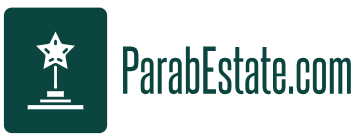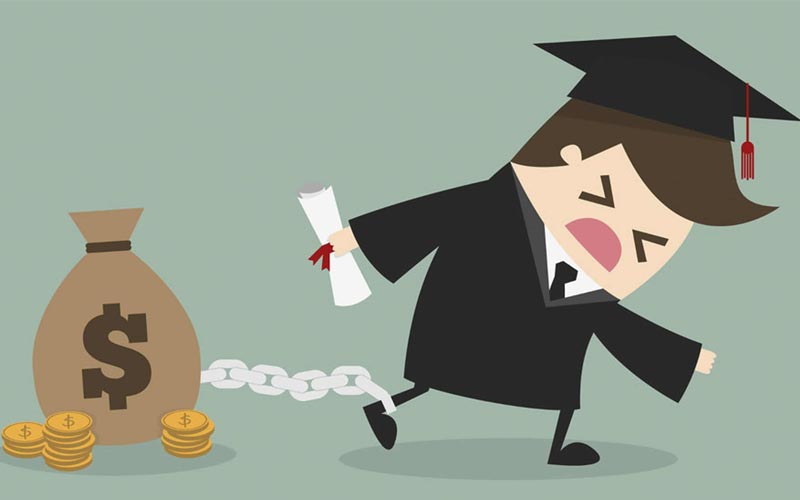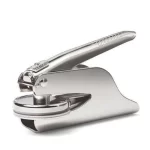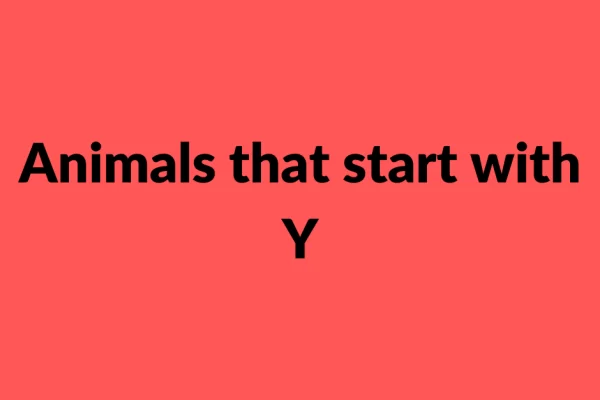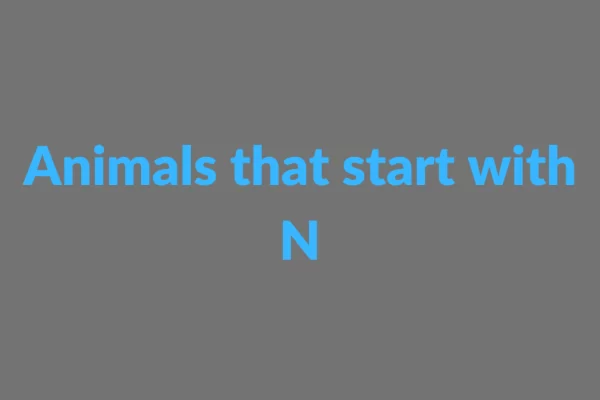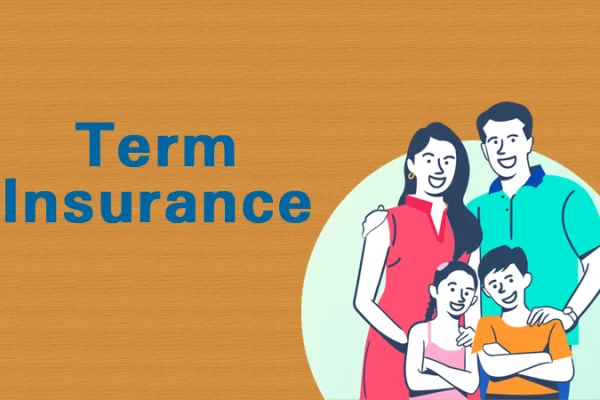When you are a student pursuing higher education, a student loan becomes a part of life. You either pay them while you are already pursuing your degree, or you may also pay them after you have completed your degree. Whatever it is, after you have completed your school, you might be left with a lot of debt to repay. In such a condition, student loan forgiveness might sound unreal and life-saving. Hence, in today’s article, we have listed the top student loan forgiveness programs. You can check out the programs and learn more about them.
Student loan forgiveness might be too good to be real and true, but there are legal ways to get loan forgiveness through free government programs. Student loan forgiveness programs are available to students with federal student loans. Federal student loans include direct subsidized and direct unsubsidized loans. So, students who have these loans can apply for student loan forgiveness programs.
Moreover, individual loans are too strict, and only some students can apply for those programs. On the other hand, an income-driven repayment program is available to almost most of the students. But, always remember, programs are not applicable to private loans. But, there are specific strategies for managing private loan debts.
For students struggling with student debts, loan discharges and loan forgiveness will sound like a dream come true. As mentioned earlier, these forgiveness and discharge programs are available only for federal student loans and not for private loans.
If you have a direct subsidized or direct unsubsidized loan, you can check out the below forgiveness and discharge programs. Below we have mentioned student loan forgiveness programs, student loan discharge programs, and student loan cancellation programs. Go through each of them, and select the one best suitable for you. Hence, scroll down to know more.
Table of Contents
What is a Student Loan Discharge or Forgiveness?
The U.S.’s Education Department offers various forgiveness and discharge programs for direct federal student loans. If you have a direct federal student loan, you can have some or all of your loan either forgiven or discharged in some situations. While student loan forgiveness or discharge or cancellation are used interchangeably, all the terms are different from one another.
The terms discharge, forgiveness, and cancellation mean nearly the same thing. But, they are used in different ways. So, if you are no longer required to make loan payments due to your job, then that is generally called cancellation or forgiveness. On the other hand, when you are no longer needed to make loan payments due to complete and total disability or closure of your degree school, it is called discharge.
Hence, you may qualify for student loan forgiveness programs based on your qualifications, likewise your career path. Or, you may also be qualified for a loan discharge under circumstances that are entirely beyond your control. This includes becoming wholly or partially disabled. Hence, depending on the situation and qualifications, you are qualified for loan forgiveness or discharge, or cancellation.
4 Best Student Loan Forgiveness Programs
With student loan forgiveness programs, you make payments for a specific period. So, after you have met the forgiveness programs’ requirements, the enduring loan balance is cancelled. Below we have listed the top 4 student loan forgiveness programs.
1. Income-Driven Repayment Forgiveness
If you cannot afford payments on ten years standard repayment loan, then the IDR plan or Income-Driven Repayment forgiveness plan is a great option. So, with this forgiveness plan approach, you enter into the IDR plan, which bases your monthly loan payment on your discretionary income and family size. Hence, depending on your monthly income, you will get qualified for a lower monthly loan payment—this comparatively lower than what you are paying currently.
So, your repayment term period is extended to 20 to 25 years. This entirely depends on what plan you choose. Moreover, if you still have a loan repayment amount left at the end of the period, that amount is forgiven. However, the cancelled amount is taxable as income.
If you want to qualify for an Income-Driven Repayment plan, you must be eligible for one of the following IDR plans. It would help if you were qualified and balanced after making the loan payments for the complete repayment term.
Income-Based Repayments
So, by choosing this repayment plan, you can substantially reduce your monthly loan payments. This depends on your monthly income and family size. So, for new borrowers, who took loans after 1st July 2014, the monthly payment under income-based repayments is set at 10% of your discretionary income. So, your repayment term is set at 20 years. This is regardless of whether your loan was for a graduate or undergraduate program.
But, if you are not a new borrower, then your payment is set at 15% of your discretionary income. But, remember, this payment is lesser than your standard repayment amount. Moreover, your repayment term period will be 25 years.
Your discretionary income is the difference between poverty guideline’s 150% of your family size and state and household income.
Income-Contingent Repayments
1993’s Student Loan Reform Act introduced an ICR or Income-contingent repayment plan. This forgiveness repayment plan stands as a great alternative to the standard repayment plan. ICR bases monthly loan repayments on their family size and incomes.
Your ICR’S discretionary income is the difference between poverty guidelines 100% for your family size and state and adjusted gross income. So, for example, considering you are a single student in Pennsylvania earning $30,000 per year. Poverty guideline’s 100% is $12,760. To get your discretionary income, you have to subtract $30,000 and $12,760. So, your discretionary income stands at $17,240. So, as per ICR, your monthly repayments are 20% of discretionary income. Then, divide by 12 months. So, this such a condition, you have to pay $287 per month.
Also, remember, poverty guidelines increase with the increase in your family size. So, when you become a family of three, then your monthly repayment will be $138.
PAYE or Pay As You Earn
The Pay As You Earn is best suitable for you if you have loans for your graduate school. If you are married to a higher-earning spouse or do not expect any high income jumps in your future career. So, if you have the following conditions, then PAYE is best suitable for you.
People mostly seek out PAYE because, along with IBR payments, it greatly lowers your monthly income. So, with Pay As You Earn, the payments are set at 10% discretionary income.
The Department of Education calculates your monthly loan payments in the following ways:
First, it takes your income and subtracts poverty guideline’s 150% for your family and state. If you live in Alabama and support two kids and a stay-at-home spouse, this amount goes to $39,300 and If you are earning $45,000 and subtracting this number, your discretionary income is $5,700. If you take 10% of that amount and divide it by 12 months, your monthly payment stands at $47.50.
Moreover, each year you have to send reports of your family size, income, and location. So, your monthly payment will change accordingly.
REPAYE or Revised Pay As You Earn
REPAYE is available for direct student federal loan borrowers. If you opt for REPAYE, then payments are set at your discretionary income 10%. The discretionary income is the difference between your poverty guideline’s 150% of your family size and state and household income.
So, let’s consider you are a single student living in Florida. Then, the poverty guideline’s 150% is $19,140. So, if you are earning $30,000, then subtract your salary and $19,140. Then, you will get your discretionary income, i.e., $10,860. Hence, under REPAYE, your payment is 10% of your discretionary income. So, your monthly income will stand at $90.50.
Moreover, with REPAYE, the repayment period term is 20 years. This was when all your student loan plans were for the undergraduate program. Now, if your loan was for graduate school, then the repayment term is 25 years.
Hence, these were the four Income-Driven Repayment Forgiveness plans. You can go for any one of these plans. So, if you want to apply for an Income-Driven Repayment Forgiveness plan, you can do it online. Or, you can even do that by contacting your loan provider.
2. Perkins Loan Cancellation and Discharge
If you have Perkins loans and work in public services, you can be eligible for full or partial loan forgiveness. Perkins Loan was last issued in 2018. So, if you had got the loan before 2018, then you are lucky. So, depending on your status, you can have up to 100% of your loan forgiven within five years. Below we have listed the eligible career paths and the debt amount that can be cancelled.
Position | Student Loan Debt Amount Canceled |
| Teacher | Up to 100% of eligible service for five years. |
| A Medical technician or full-time nurse | Up to 100% of eligible service for five years. |
| Full-time firefighter (services beginning on and after 14th August 2008) | Up to 100% of eligible service for five years. |
| Full-time early intervention services qualified professional provider for disabled | Up to 100% of eligible service for five years. |
| A full-time faculty member at a tribal university or college | Up to 100% of eligible service for five years. |
| Full-time master’s degree speech pathologist working in a Title I-eligible secondary or elementary school | Up to 100% of eligible service for five years. |
| Master’s degree librarian working Title I-eligible schools’ public library or in a Title I-eligible secondary or elementary school | Up to 100% of eligible service for five years. |
| Full-time corrections officer or law enforcement officer | Up to 100% of eligible service for five years. |
| Full-time employed attorney in a community defender organization or federal public organization (service beginning on and after 14th August 2008) | Up to 100% of eligible service for five years. |
| A full-time employee of a public or non-profit child and family services agency providing services to high-risk children and their low-income communities’ families | Up to 100% of eligible service for five years. |
| Full-time Head Start Program’s staff member in the education component | Up to 100% of eligible service for seven years (at a 15% rate for the first six years and 10% at the 7th year) |
| Full-time prekindergarten or child care program’s staff member in the education component, regulated or licensed by a state (service beginning on and after 14th August 2008) | Up to 100% of eligible service for seven years (at a 15% rate for the first six years and 10% at the 7th year) |
| U.S. armed forces’ military services in an imminent danger pay area or hostile fire (service beginning on and after 14th August 2008) | Up to 100% of eligible service for five years. Borrowers whose active duty service period includes on or after 14th August 2008. |
| Peace Corps or AmeriCorps VISTA volunteers | Up to 70% of eligible service for four years (at a 15% rate for first and second years and 20% for the third and fourth years) |
If you have been working as a public service provider, you are eligible for Perkins Loans Forgiveness or Discharge. To apply for Perkins Loan Cancellation or Discharge, contact your school that had made the loan.
3. PSLF or Public Service Loan Forgiveness
Under PSLF, specific federal loan borrowers can have their loan payments forgiven after monthly 120 loan payments. So, to qualify for PSLF, you must work full-time for a government or non-profit organization while making 120 monthly qualifying loan payments. Moreover, payments under the IDR plan allow payments for PSLF purposes. The PSLF loan amount forgiven is not taxable as income. So, to find out whether your loans and employment are eligible for PSLF or not, then you must use the PSLF tool.
4. Teacher Loan Forgiveness
With this loan forgiveness plan, you can get up to $17,500 loan forgiveness. So, suppose you are a full-time teacher for five consecutive and full academic years, in a low-income secondary and elementary school. In that case, you are eligible for this teacher loan forgiveness. Moreover, if you are a teacher in an educational agency, you can also qualify for this loan.
So, federal direct subsidized and unsubsidized loans borrowers are eligible for teacher loan forgiveness. Only mathematics and science teachers and some other individual subject teachers are eligible for $17,500 loan forgiveness. On the other hand, other subject teachers are qualified for just $5,000 loan forgiveness. So, if you want to apply for Teacher Loan Forgiveness, then you must submit your application of the same to your loan provider. You can do this after five years’ service.
Other Student Loan Forgiveness Programs
- Nurses’ Student Loan Forgiveness: Nurses who are shouldering student loan debts have several student loan forgiveness program options. They are starting from Perkins Loan Cancellation to Public Service Loan Forgiveness to NURSE Corps Loan Repayment Program. The NURSE Corps Loan Repayment Program pays up to qualified nurses’ 85% unpaid college debt. The best program is the Public Service Loan Forgiveness. The NURSE Corps Loan Repayment Program is highly competitive. So, a lot of nurses might not get it.
- Military Student Loan Forgiveness: Military personnel in the Navy, Army, Coast Guard, Air Force, and National Guard may qualify for their loan forgiveness programs. For instance, at the National Guard, qualifying officers and soldiers can receive up to $50,000 loan forgiveness. You can do this with the help of the Student Loan Repayment Program.
- LRAPs or Additional Student Loan Repayment Assistance Programs: There are other organizational or national student loan repayment assistance programs. These are offered for public service professions. The National Institutes of Health provides debt assistance up to $35,000 annually to health professionals. The Institute appoints health professionals to conduct research. Moreover, for lawyers, the American Bar Association has a list of state LRAPs.
So, these were the student loan forgiveness programs. If you are not qualified for any of the programs, you can consider student loan discharge programs. Below we have mentioned the best student loan discharge programs. Therefore, scroll down and know in detail more about the various student loan discharge programs.
7 Best Student Loan Discharge Programs
Student loan discharge programs are a relief when circumstances lead you not to complete your school or repay your loans. So, for federal loans, there are seven student loan discharge programs.
1. Borrower Defense to Repayment
If you had attended the school that misled you or misconducted you, then you are eligible borrower’s defence to a repayment program. For instance, if your school false-promised you about job prospects or was falsely accredited, then you can claim for this discharge program. This discharge program applies to only federal loans. The school’s misconduct might have been directly related to your loans. Or, for the educational service, the loan was provided.
To apply for this program, submit an application form to your loan provider. Moreover, if you have any additional documentation or emails, then attach them also. Those documents will ease the process of getting the discharge program.
2. Closed School Discharge
If your degree school gets closed while you are pursuing the degree or soon after you withdrew, then you might be eligible for 100% Perkins loans or FFEL discharged with the help of closed school discharge.
So, you can qualify if you weren’t able to complete your program because your school closed. You also have to make sure that you were still enrolled in the school’s program. Moreover, you can also qualify if you were on an approved absence leave at the time of closure. Or, you are qualified if your school closed 120 days before your withdrawal. Hence, to apply for this program, contact your loan provider.
3. Discharge Due to Death
Unfortunately, the loan can be discharged if the student who and for whom the loan was issued dies. Here, all federal loans are eligible. As for parent loans, including Parent PLUS loans, if the parent who gave the loan or the student for whom the loan was taken dies, the loan is discharged. So, to apply for this discharge program, a death certificate or relevant documents must be submitted to the loan provider.
4. Discharge in Bankruptcy
In certain situations, your loan may get discharged due to bankruptcy proceedings. To qualify for this program, you must file for a Chapter 7 Bankruptcy. Also, you have to file for adversary proceedings. So, as part of this process, you have to prove that repaying loans will act as excessive strain on you and your family’s financial conditions. The loan repaying might impose an undue hardship on your family and you. Undue hardship is stated by the following:
- While repaying the loan, you and your family might not be able to maintain the minimal and basic standard of living.
- The hardship is going to continue for the maximum loan repayment period.
- You have made great efforts to repay the loan before filing for bankruptcy.
Moreover, keep in mind that bankruptcy discharge is rare. Also, your creditors may challenge your filing as well. So, be fully accustomed to rules and conditions before applying for bankruptcy discharge.
5. False Certification Discharge
If you had taken a direct federal loan or an FFEL, and then your school falsely certified your loan receiving eligibility, then you get qualified for a false certification discharge program.
You can qualify under three circumstances:
- Ability to benefit: The school has falsely certified your eligibility to receive a loan. This is due to the ability to benefit from the training, and you did not meet the ability-to-benefit eligibility requirements in a specific period. For instance, you do not have a high school diploma or equivalent; then you do not meet the ability-to-benefit eligibility requirements. Hence, you are not able to issue student loans.
- Disqualifying status: The school certified the eligibility to receive the loan, but you were not eligible. This can happen in conditions when you are disqualified for a job in your state. This can owe to mental or physical illness or criminal record.
- Unauthorized payment or unauthorized signature: The school has signed your name on the promissory note, loan application, electronic fund check transfer authorization, or loan without your knowledge or permission.
Hence, depending on your situation, you can apply for a false certification discharge program. Submit your application to your loan provider for loan discharge.
6. Total and Permanent Disability Discharge
If you have an FFEL, direct, Perkins, or TEACH grant, you can be qualified for Total and Permanent Disability Discharge if you become permanently and disabled. You can be eligible for Total and Permanent Disability Discharge programs as per three entities:
- VA or U.S. Department of Veterans Affairs: Under 2019’s presidential memorandum, a federal student loan is forgiven for permanently disabled military veterans. Eligible veterans receive a notification in the email informing them about their eligibility for discharge. Moreover, if the veterans do not want to take advantage of automatic forgiveness, they must contact the Education Department. If you feel that you are eligible for this discharge program, then get the Education Department.
- SSA or Social Security Administration: If you are eligible for SSA because of your disability, you can qualify for a loan discharge by submitting your SSA notice of award’s copy. You may also submit a Benefits Planning Query showing that your next scheduled disability review is five to seven years from your previous SSA disability determination.
- A physician: You can qualify for this discharge program if a physician has stated that you are permanently disabled or won’t be able to perform any work in the future. So, you must be disabled for at least 60 months, and you will be permanently disabled for 60 months hence. You can also qualify if your disability can lead to your death.
If you want to apply for this program, then visit disabilitydischarge.com and fill out the application.
7. Unpaid Refund Discharge
This is available for direct and FFEL loans. You can qualify for this loan if you left school and your college did not pay the required funds to your loan provider. Before applying for this program, you can talk to your school’s officials and try to resolve the issue. So, to apply for this loan, fill out an application form and submit it to your loan provider.
Limitations to Loan Forgiveness and Discharge Programs
- Forgiven loans are taxable: In general, forgiven, discharged, and cancelled loans are taxable to income. But, this is not the case if you qualify to work for a particular occupation or employer. So, for instance, Public Service Loan Forgiveness discharged amounts are not taxable. But, income-driven repayment plans’ forgiven debts are not taxable. Loans discharged due to disability or death are not taxable any more as well.
- Loan forgiveness is not an option for defaulted loans: You have to use rehabilitation or consolidation to get your defaulted student federal loans in good standing before qualifying for forgiveness. Defaulted federal loans are eligible for loan discharge programs.
Summing Up!
Hence, these were some of the loan forgiveness or cancellation and discharge programs. The programs are qualified under certain conditions, and only some people are eligible for forgiveness. Read all the requirements properly to know which one of the student loan forgiveness programs is best suitable for you.
